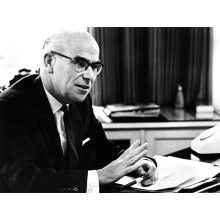Best Ergomatic Cabbed-Lorry Model? PART 4.Page 10.TRUCKNETUK
I’ll quote myself first:-
AEC 3VTG CONCEPT PROJECT LORRY.
As I said in my last post,the wise AEC 3VTG Concept Project Lorry was the wise and inspired idea of the boss of AEC,Dr.Albert D.Fogg,who obviously wanted to copy Volvo with it’s refined American-style F88-F89
lorry models,and produce a refined American-style AEC heavy lorry range ![]() And in the words of the great
And in the words of the great
Barry Norman:“And why not”… ![]() And why not indeed,because other lorry manufacturers were doing the same thing
And why not indeed,because other lorry manufacturers were doing the same thing ![]()
The interior of the AEC 3VTG cab was well-appointed,with Bostrom Viking seats,a very comprehensive instrument panel and good cross cab access. The lorry’s engine bay allowed more air to circulate around
the engine than with the Ergomatic Cab,and it’s AEC 801 Series V8 engine had a much larger header tank,
radiator and cooling fan than the AEC Mandator V8.
Albert Fogg wanted to produce a better cab than the Ergomatic,and he was well on the way in doing this
with his AEC 3VTG Lorry ![]() He realised that the Ergomatic was not big enough,it produced cooling problems
He realised that the Ergomatic was not big enough,it produced cooling problems
for the engines,especially in the tropics,it had design flaws and,according to Albert Fogg,it was not suitable
for long distance motorway journeys. So entered the AEC 3VTG Project-Concept-Prototype Heavy Lorry for all of the above reasons that I’ve listed ![]()
But,as I’ve already stated,Leyland mismanagement very misguidedly scrapped the AEC 3VTG Programme ![]() …and by doing so,it was yet another long,long,sharp,sharp nail in the unholy coffin of
…and by doing so,it was yet another long,long,sharp,sharp nail in the unholy coffin of
the British Leyland Motor Corporation! ![]()
![]()

AEC 3VTG6RGAE 090 Mk1 Project-Concept-Prototype 6x4 Tractive Unit Specifications:-
Cab: Motor Panels Tilt Cab,modified.
Engine: AEC 801-Series-AVM8/801,13.1-Litre,V8 Diesel Engine,producing 272 BHP @ 2600 rpm,638 lbs ft of torque @ 1400 rpm.
Gearbox:Leyland-Self Changing Gears -SCG Pneumocyclic 10-forward speed Splitter Semi-Automatic Gearbox.
Rear driving axles: Leyland Group Hub Reduction Drive Axles.
Year:1968.
Not only was Dr.Albert D.Fogg the General Manager of AEC Ltd,he was a member of the board of the British Leyland Motor Corporation,Deputy Managing Director of this corporation and Director of Engineering of British Leyland. So his above various positions within British Leyland allowed him a substantial amount of influence within British Leyland and at AEC,thus,the AEC 3VTG being Albert Fogg’s pet project,he probably had every intention in eventually turning it in to a production lorry to take on the likes of the Volvo F88-F89,Scania LB110,etc ![]()
But of course,British Leyland mismanagement very misguidedly scrapped the 3VTG project ![]() ,which proved to be fatal for British Leyland in the long run - as did the scrapping of the AEC marque!!!
,which proved to be fatal for British Leyland in the long run - as did the scrapping of the AEC marque!!! ![]()
![]()
![]() .
.
According to Pat Kennett,development work started on the Leyland Marathon in circa 1971,and this lorry
turned out to be a compromise because of the limited financial budget allotted for it’s development ![]() -
-
the AEC 3VTG would probably have been better and more successful than the Leyland-AEC Marathon ![]()
The Marathon was introduced in 1973. But instead of using the money for the Marathon project, AEC-Leyland
might have saved some of this money getting rid of the V8 engine’s problems,fully developing the Motor Panels 3VTG cab and getting the AEC 3VTG heavy lorry range in to production,probably in 1972 ![]() It would
It would
not have been the compromise that the Marathon was.
Ramone wrote:-
“If you go back to 62 AEC actually merged with Leyland but it never worked out that way.Ive read that after BLMC was formed in `68 Stokes in a meeting wanted to close AEC .It seems it was always a tense relationship with Leyland always having the upperhand Stokes apparently having deep hatred for AEC which stems from not getting a job with them”.
I would love to know the full story of Lord Stokes apparently wanting to close AEC in 1968,and I am sure
that Graham Edge could provide all the details.Please ![]()
Before,I go on any further,I want to make it clear that I have always had a great enthusiasm for AEC lorries,
motorcoaches,buses,engines,etc,and mixed feelings for Baron Lord Donald Gresham Stokes of Leyland - to use his full title ![]()
AEC supposedly turned down Donald when he supposedly applied for a job at AEC in the early 1930s.Now I have heard this ridiculous story countless times over the years,but I have always been very cynical about it,and I am just as cynical about Donald wanting to shut down AEC in 1968? ![]()
![]() !
! ![]()
These are just childish stories concocted by certain AEC enthusiasts as a means to get back at Leyland and
Donald Stokes. It is on WRITTEN RECORD that Donald Stokes always wanted to work for Leyland Motors Ltd
from when he was 11 years old! ![]()

Lord Donald Stokes in 1968.He always wanted to work for Leyland -NOT AEC.
VALKYRIE.

